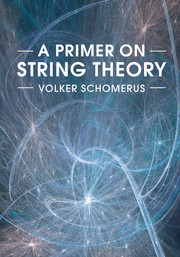Book contents
- Frontmatter
- Contents
- Preface
- 1 Historical Introduction and Overview
- Part I Strings in Flat Backgrounds
- 2 The Classical Closed Bosonic String
- 3 Free Bosonic Quantum Field Theory
- 4 Covariant Quantization
- 5 Light-Cone Quantization
- 6 Branes and Quantization of Open Strings
- 7 Open Strings and Gauge Theory
- 8 Free Fermionic Quantum Field Theory
- 9 Supersymmetry in 10 Dimensions
- 10 Construction of Type IIA/B Superstrings
- 11 Branes in Type II Superstring Theory
- 12 Construction of Heterotic Superstrings
- Part II Strings in Curved Backgrounds
- Bibliography
- Index
11 - Branes in Type II Superstring Theory
from Part I - Strings in Flat Backgrounds
Published online by Cambridge University Press: 05 July 2017
- Frontmatter
- Contents
- Preface
- 1 Historical Introduction and Overview
- Part I Strings in Flat Backgrounds
- 2 The Classical Closed Bosonic String
- 3 Free Bosonic Quantum Field Theory
- 4 Covariant Quantization
- 5 Light-Cone Quantization
- 6 Branes and Quantization of Open Strings
- 7 Open Strings and Gauge Theory
- 8 Free Fermionic Quantum Field Theory
- 9 Supersymmetry in 10 Dimensions
- 10 Construction of Type IIA/B Superstrings
- 11 Branes in Type II Superstring Theory
- 12 Construction of Heterotic Superstrings
- Part II Strings in Curved Backgrounds
- Bibliography
- Index
Summary
Having constructed our first examples of tachyon-free closed string models we now turn to the description of branes and open strings in type II superstring theory. We shall begin with a brief discussion of solitonic branes in type II supergravity. This part is rather descriptive. In particular, we do not intend to explain how these solutions are found. We shall then turn to the string theoretic analogue of solitonic branes. As we explained in the introductory chapter branes in string theory are objects on which open strings can end.We shall use this as a definition of D-branes in string theory and verify that the resulting objects share many features with the solitonic branes in supergravity. Finally, gauge theories on the world-volume of D-branes are discussed briefly.
Our quantization of open strings in this section will proceed through the lightcone gauge rather than the covariant formalism. This will give us a good opportunity to review the basic ideas of light-cone gauge quantization. But there is another reason for us to do so. In the last chapters we have spent some time to verify that the massless states of type II string theories form full multiplets of the Poincaré superalgebra. Extending this analysis to massive sectors would be a rather difficult task. Here we want to verify that all eigenspaces of the mass operator for open strings in the type II theory possess the same number of bosonic and fermionic components. To reach that goal, the light-cone gauge has clear advantages since it allows for a direct and simple construction of physical states.
Solitonic Branes in Type II Supergravity
At the end of the previous section we have seen N=2 supersymmetric supergravities in 10 dimensions. As we argued there, these theories may be considered as higher dimensional generalizations of EINSTEIN-MAXWELL theory. In fact, the action of type IIA/B supergravities contains a number of higher form potentials Cp+1. From the study of 4-dimensional gravity it is well known that there exist special solutions that describe charged black holes.
- Type
- Chapter
- Information
- A Primer on String Theory , pp. 103 - 114Publisher: Cambridge University PressPrint publication year: 2017



